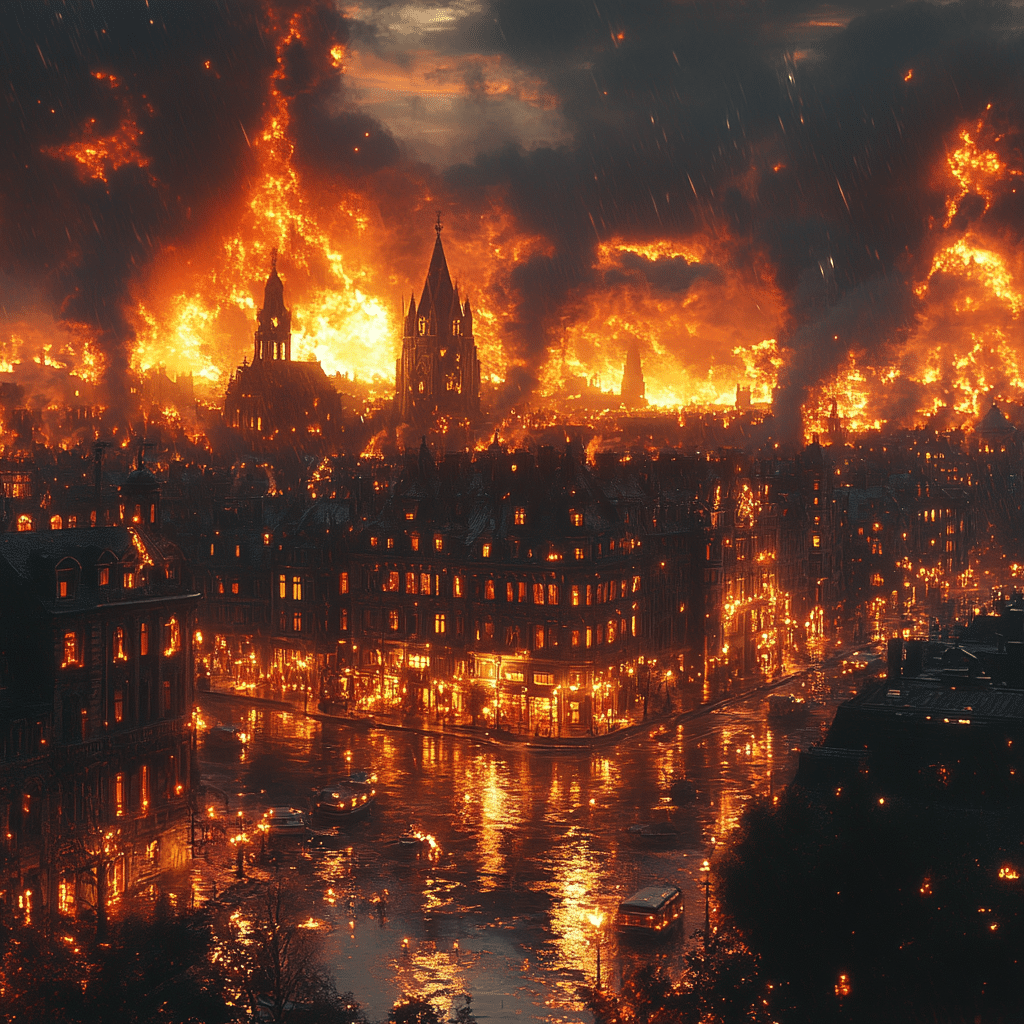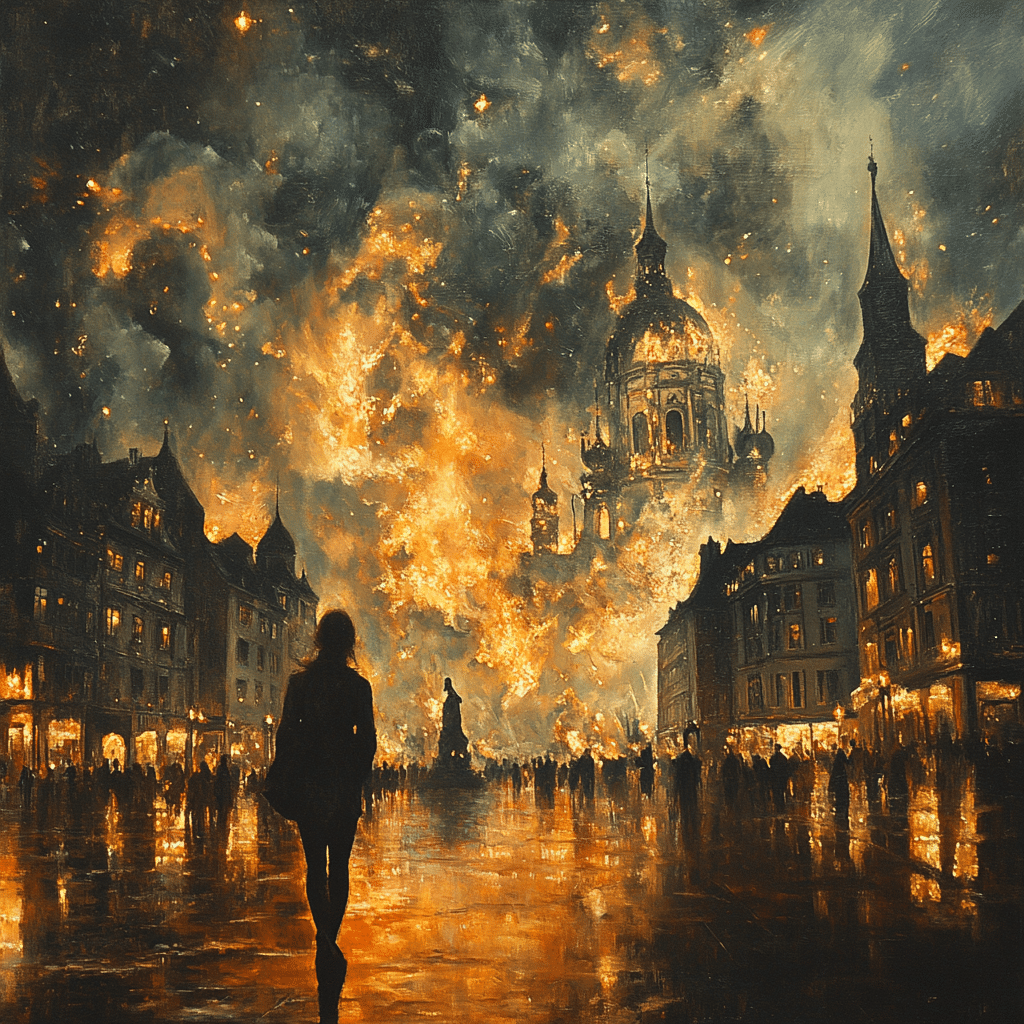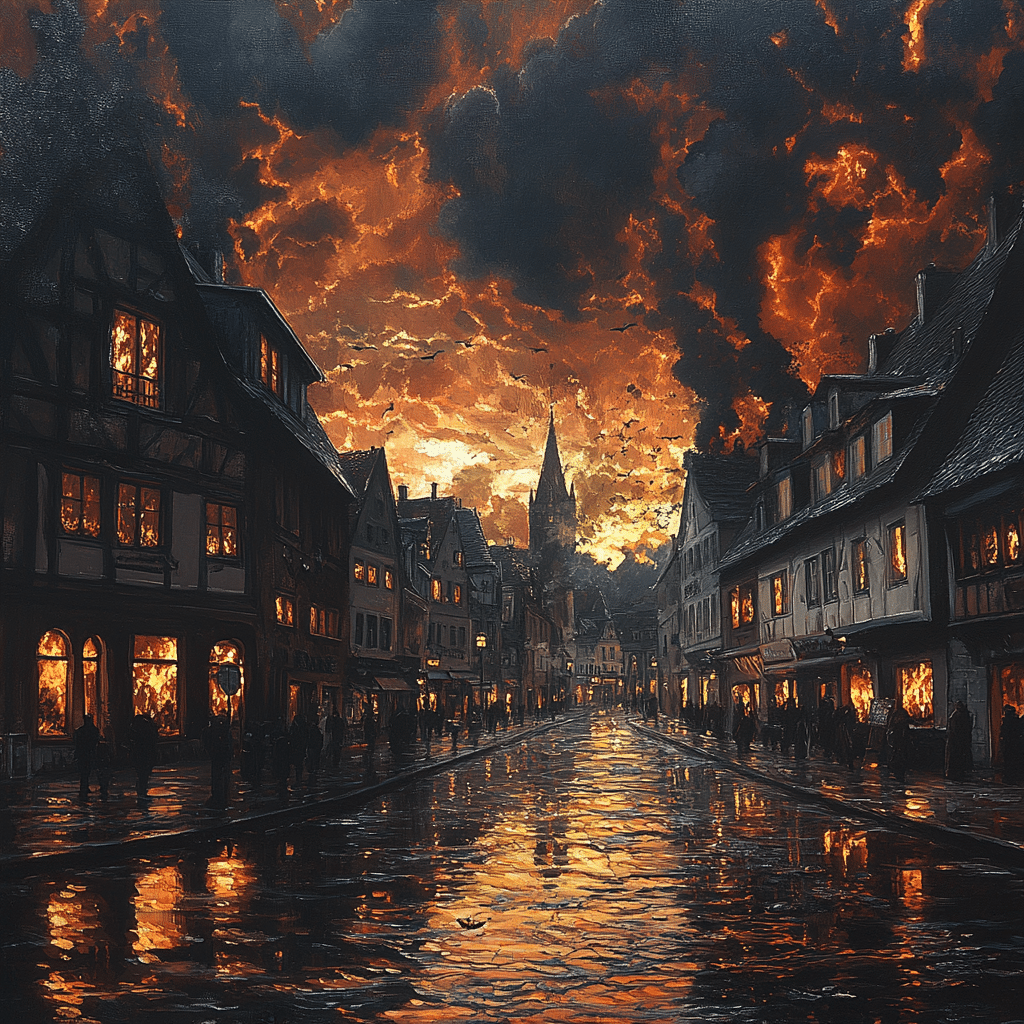Understanding Kristallnacht: Its Historical Context and Legacy
The term Kristallnacht, or the Night of Broken Glass, conjures images of chaos and destruction from November 9-10, 1938. This infamous event marked a critical turning point in the Nazi regime’s systematic campaign against the Jewish people. Over the course of a single night, Jewish homes, businesses, schools, and synagogues across Nazi Germany and Austria were viciously attacked. To this day, the significant fallout from Kristallnacht reverberates through history, prompting urgent discussions about human rights and social justice in 2024.
During this dark chapter, rioters devastated over 267 synagogues and more than 7,000 Jewish-owned businesses. A staggering 30,000 Jewish men were forcibly arrested and sent to concentration camps, sparking widespread terror across Jewish communities. While Kristallnacht symbolized a drastic escalation of anti-Semitic violence, it also served to strip Jewish individuals of their citizenship and cultural identity. As we mark Kristallnacht 2024, it is essential to reflect on these historical events and their enduring impact on Jewish identity around the world.
As we look back on Kristallnacht in 2024, remembering its historical significance becomes even more vital. Understanding the roots of this tragedy helps us confront present-day discrimination. It serves as a reminder that we must actively challenge hate, ensuring history does not repeat itself. We can honor the victims and survivors by continuing to foster a society where empathy and understanding remain paramount.

Eight Key Lessons from Kristallnacht 2024: Reflections for Today
Today, as we engage with digital platforms, the rise of hate speech calls for careful scrutiny. The harsh realities of Kristallnacht echo louder than ever, reminding us that unchecked resentment can escalate into violence. It’s crucial to stay alert and confront toxic narratives before they spiral out of control.
Institutions like the United States Holocaust Memorial Museum are pivotal in educating new generations. They play an essential role in preserving the memory of Kristallnacht through exhibits, survivor testimonies, and educational programs. This ongoing work helps ensure that the horrors of the past remain vivid in our collective memory.
In the wake of Kristallnacht, many non-Jewish Germans took action against the Nazis, pushing back with demonstrations of solidarity. Fast-forward to 2024, parallel movements thrive, as community organizations strive to advocate for social justice and human rights. Such resilience showcases the power of unity in confronting oppression.
Political leaders today frequently draw comparisons to Kristallnacht, urging a rejection of divisive rhetoric. It’s crucial for those in power to uphold inclusivity in their discourse. As we engage in discussions, let’s remember the weight our words carry and their potential to either uplift or incite violence.
The plight of Jewish refugees post-Kristallnacht mirrors the challenges faced by uprooted populations today. Organizations like the International Rescue Committee advocate for humane policies that recognize the historical lessons of neglect. Addressing the needs of today’s refugees echoes the call for justice that arose in the aftermath of Kristallnacht.
Artistic expressions serve a vital role in reinforcing memory and evoking emotion surrounding Kristallnacht. Works such as “The Pianist” amplify the harrowing experiences of survivors, while contemporary art exhibits create space for dialogue. They remind us of the importance of storytelling in preserving history.
Schools across the globe are increasingly including Holocaust education, such as programs like Facing History and Ourselves. These curricular reforms empower students to confront issues of prejudice and social justice. An informed generation is our best hope for a future devoid of hate.
The establishment of interfaith initiatives reflects a collective effort to build community ties. In fighting the rising tide of anti-Semitism, these projects promote understanding and respect among diverse groups. In 2024, fostering dialogue is an essential step towards healing societal rifts.
The Role of Technology in Commemoration: Digital Archives and Virtual Reality
Technology has ushered in new avenues for memorializing the horrors of Kristallnacht and the Holocaust at large. Digital archives, such as the Shoah Foundation’s visual history project, provide unprecedented access to firsthand accounts from survivors. These resources offer invaluable insights into the resilience and humanity that flourished amidst despair.
Moreover, virtual reality experiences allow individuals to step into the shoes of those who lived through these historical events. By immersing themselves in the narratives of survivors, users gain a deeper understanding of the emotional weight tied to Kristallnacht. In 2024, engaging with these technological advancements enables poignant reminders of history while building connections with younger audiences.
In addition to individual engagement, online memorials now serve a greater public purpose. Facilitating global conversations, organizations have made significant strides in leveraging technology not just for remembrance, but also for education. By doing so, we help future generations grapple with the complexities surrounding Kristallnacht and prompt them to reflect on their own values and actions.

Current Challenges and Threats: Anti-Semitism in 2024
Despite the lessons learned from Kristallnacht, the specter of anti-Semitism continues to loom large in 2024. Reports from organizations like the Anti-Defamation League highlight a surge in hate crimes, vandalism of synagogues, and targeted harassment against Jewish communities. This alarming trend calls for urgency and a renewed commitment to fighting bigotry in all forms.
Anti-Semitic attitudes manifest through social media platforms, where anonymity can fuel hostility. Often, rhetoric intended to incite fear spreads rapidly, leading to targeted attacks against the Jewish community. As we grapple with the digital landscape, speaking out against intolerance in these spaces is more critical than ever.
Legal protections remain inadequate in several regions, prompting calls for stronger policies against hate crimes. Community awareness programs aimed at engaging various demographics prove essential in educating individuals about the implications of anti-Semitic behavior. It is a collective responsibility to stand up against hatred to prevent further injustices.
Cultural Commemorations: Art, Literature, and Public Events
Art and cultural expressions resonate deeply when it comes to commemorating the tragic legacy of Kristallnacht. Modern installations and performances reflect on themes of loss and resilience, inviting audiences to engage emotionally. These artistic endeavors play a vital role in reinforcing the commitment to memory and understanding.
In 2024, public events—such as memorial services held in Berlin and across the globe—serve as focal points for collective mourning and remembrance. Communities come together to honor the victims of Kristallnacht, allowing individuals to reflect on the profound costs of hate. Participation in these gatherings signifies solidarity and a dedication to learning from the past.
Film, literature, and poetry also provide unique lenses through which to process the aftermath of Kristallnacht. For instance, works like the beloved movie narrate tales of survival and humanity that resonate with readers and viewers alike. Together, these artistic mediums reinforce the importance of remembrance and inspire action against all forms of oppression.
Reflecting on Kristallnacht 2024: A Call to Action
As we observe Kristallnacht in 2024, this moment prompts deeper introspection and an unwavering commitment to action. Remembering the past is not enough; we must actively work to combat intolerance and hate in all forms. Understanding the events that transpired equips us with the knowledge to create a more compassionate society.
Let’s seize this anniversary as an opportunity to ignite conversations about the dangers of discrimination and prejudice. By honoring the resilience of those who suffered, we can foster a sense of community and mutual support. The echoes of Kristallnacht can inspire future generations to clarify their values in the face of adversity.
In uniting to confront hatred, we cultivate surroundings where empathy reigns, and differences are celebrated. This collective commitment will ensure that the traumatic lessons of Kristallnacht transform from mere history into action. As we reflect, let’s pledge to build a future rooted in compassion, resilience, and understanding.
In closing, it is our shared responsibility to uphold the memory of those lost during Kristallnacht. Let’s actively honor them through our commitment to justice, equality, and a world free from hate. Together, we can make strides toward a more inclusive future, where the lessons of the past are woven into the fabric of our society.
Kristallnacht 2024: Remembering the Night of Broken Glass
A Night Marked in History
As we approach kristallnacht 2024, it’s essential to reflect not just on the historical significance, but also on the myriad of stories that emerged in its aftermath. Did you know that, following this tragic event in 1938, many survivors became vocal advocates for peace and tolerance? One such remarkable story comes from a survivor in Cagayan who dedicated their life to sharing experiences that promote healing and understanding. These accounts help us grasp the weight of that night—often referred to as the Night of Broken Glass—when over 7,000 Jewish-owned businesses were vandalized, showcasing the dire consequences of rising antisemitism.
Commemorating the Past with Symbols
In remembering kristallnacht 2024, lighting a candle has become a poignant ritual. This simple act symbolizes hope and resilience, serving as a reminder of those who suffered. Many communities hold candlelight vigils during this time, allowing individuals to come together and honor the memories of loved ones lost. The practice of lighting a candle connects us globally, similar to how the picturesque Kyle of Lochalsh serves as a reminder of beauty and tranquility. Just as one looks to nature for solace, it’s crucial for society to look back at its harsh realities to foster change.
Learning from History
As we think about kristallnacht 2024, it’s vital to recognize the lessons from the past. For instance, Kolinda Grabar kitarović, a prominent figure in modern politics, once remarked on the importance of understanding history to prevent future atrocities. On her watch, nations learned to listen to the whispers of history. Likewise, with rising global tensions, people can draw parallels to past events to advocate for peace and unity. This reminds us how crucial it is to embrace diversity both in political discourse—like the emergence of leaders such as Kılıçdaroğlu promoting inclusiveness—and daily life.
As we prepare to reflect, it’s not just about remembering the pain, but also about celebrating resilience and the human spirit. In a world that sometimes feels as cold as arctic sea smoke in Chicago, we must remain committed to promoting understanding and warmth between communities. Let kristallnacht 2024 be a catalyst for fostering meaningful dialogues and building bridges, rather than walls.

Which of the following happened in Germany during Kristallnacht?
During Kristallnacht in Germany, there was widespread violence against Jewish people, with attackers destroying synagogues, Jewish-owned businesses, homes, and schools. Over 7,000 businesses suffered damage, and around 30,000 Jewish men were arrested and taken to concentration camps.
What does Kristallnacht mean in English?
Kristallnacht translates to “Night of Crystal” or colloquially known as the “Night of Broken Glass,” reflecting the shattered glass from windows of Jewish-owned shops that littered the streets after the violence.
Why did November 9 1938 become known as Kristallnacht Brainly?
November 9, 1938 became known as Kristallnacht because it marked a brutal and coordinated attack on Jewish people and properties, signaling a dramatic escalation in the Nazi regime’s antisemitic policies.
Why was Kristallnacht significant?
Kristallnacht was significant as it represented a turning point in the Nazi campaign against Jews, moving from economic and social discrimination to open violence, leading to increased oppression and the eventual Holocaust.
What atrocities did the German Empire commit?
The German Empire committed various atrocities, including the widespread persecution of Jews, ethnic minorities, and political dissidents, particularly during the two World Wars and under the Nazi regime.
What does blitzkrieg stand for?
Blitzkrieg translates to “lightning war,” referring to a fast and intense military campaign that aims to bring about a swift victory, notably used by Germany during World War II.
Why is it called the Third Reich?
It’s called the Third Reich because it was viewed as the third major German empire, following the Holy Roman Empire and the German Empire of 1871, under Adolf Hitler’s Nazi rule.
What is Kristallnacht Kids?
Kristallnacht Kids refers to educational programs or initiatives aimed at teaching young people about the events of Kristallnacht and promoting awareness of antisemitism and tolerance.
What does Gestapo stand for?
Gestapo stands for “Geheime Staatspolizei,” which means “Secret State Police” in German. It was the official secret police of Nazi Germany, notorious for its brutal tactics against opponents.
Which incident took place on November 9 1918?
On November 9, 1918, Germany experienced significant political change as the German Empire was declared a republic, marking the end of monarchic rule after World War I.
What happened in August 1938?
In August 1938, there were increased antisemitic laws and social unrest in Germany as the Nazi regime escalated its persecution of Jews, preparing for the events that would culminate in Kristallnacht.
Which important German historical event took place on November 9 1989?
The important German historical event that took place on November 9, 1989, was the fall of the Berlin Wall, which symbolized the end of the Cold War and the division between East and West Germany.
What does Kristallnacht mean in the dictionary?
In the dictionary, Kristallnacht means “the Night of Broken Glass,” describing the violence against Jewish communities in Germany on November 9 and 10, 1938, where windows were smashed and properties destroyed.
Why was the Munich crisis significant?
The Munich Crisis was significant because it represented a major test of European responses to Nazi aggression, leading to the policy of appeasement and ultimately failing to prevent World War II.
What is the meaning of pogrom?
A pogrom is defined as a violent riot aimed at the massacre or persecution of a particular ethnic or religious group, most commonly used to describe attacks on Jews in Eastern Europe.
What was happening in Germany in 1973?
In 1973, Germany was witnessing considerable political and economic changes, including tensions from the Cold War, with West Germany growing economically while East Germany faced struggles.
What happened in Germany in 1600s?
In the 1600s, Germany saw various conflicts and upheavals, most notably the Thirty Years’ War, which devastated large parts of the country and had lasting effects on its population and political structure.
What happened in 1886 in Germany?
In 1886, Germany was involved in various developments, including industrialization, and it was the year when several significant cultural and technological advancements were taking place.
What happens in Germany in 1990 quizlet?
In 1990, Germany saw the reunification of East and West Germany after the fall of the Berlin Wall, marking a pivotal moment in its history and a major shift in European politics.



